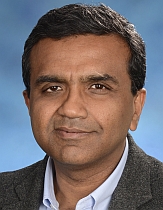
Prashant Raghavan
Primary hyperparathyroidism (HPT) is a fatal illness if left untreated. Surgical removal of the hyperfunctioning gland remains the only effective treatment available. Imaging plays a vital role in localizing one or more abnormal parathyroid glands for surgical planning. Traditionally, ultrasonography and technetium Tc99m sestamibi scintigraphy have been employed in localizing abnormal parathyroid glands. Although useful, in a substantial number of patients with HPT these techniques are inconclusive.
In 2006, Rodgers et al described an innovative CT technique, termed 4D-CT, in the evaluation of patients with HPT. The term “4D” was originally applied to the process of axial image acquisition with coronal and sagittal reconstructions allied with imaging of the neck in unenhanced, arterial, and delayed/venous phases. The term has since also been applied to the technique of scanning the neck in 4 phases (1 unenhanced and 3 postcontrast venous phases). Some institutions have chosen to obtain all 4 phases, with others opting for 2 or 3, all the while confusingly retaining the 4D moniker. There does not, therefore, appear to be a standardized scanning technique.
The purpose of our paper was to determine which combination of the 4 phases was most accurate in the detection of parathyroid adenomas. We found that a combination of an unenhanced phase (to differentiate between thyroid and parathyroid tissue) and an arterial phase (to detect the characteristic hypervascularity of adenomas) worked as well as any other combination of phases, with the advantage of decreased radiation dose compared with the traditional 4D technique. This may be because all that is required to identify an abnormal parathyroid gland is location and arterial phase hyperenhancement.
Since our publication, several authors have reported excellent accuracy with only 2 phases, while others have described 3 different adenoma enhancement patterns, requiring 3 phases for definitive characterization. Our findings resulted in us abandoning the 4-phase protocol entirely in